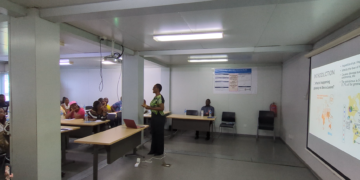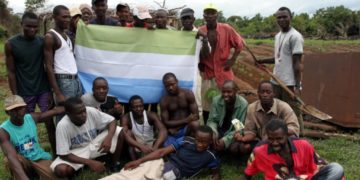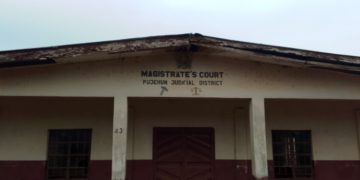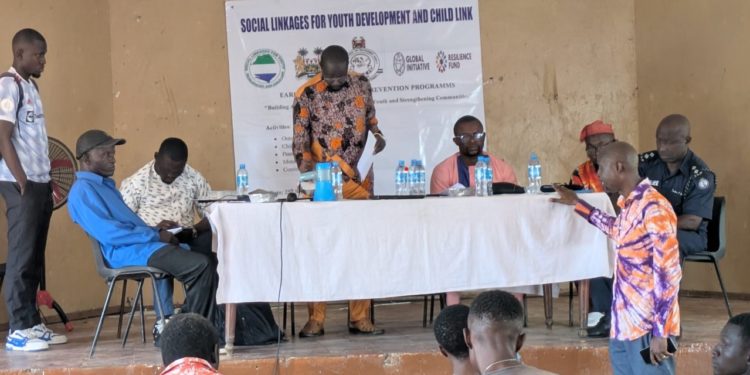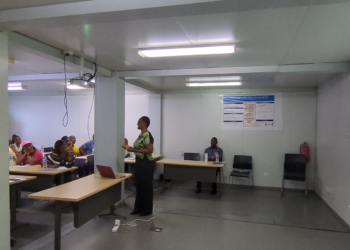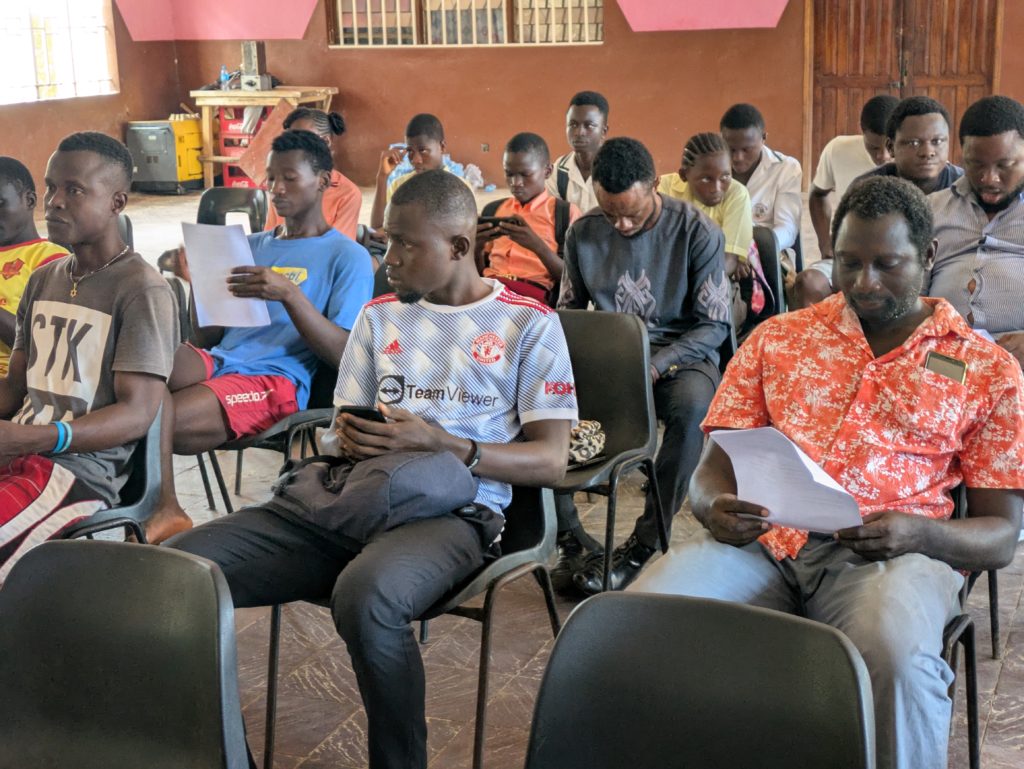
By Kemo Cham
Social Linkages for Youth Development and Child Link (SLYDCL) on Monday, September 25, convened a community outreach as part of efforts to raise awareness about the dangers associated with drugs and substance abuse in Sierra Leone.
About 50 participants, mainly young people, drawn from within the community of Grass Field in Lumley and its environs, assembled in the Lumley Community Center for the event that also entailed a training on early intervention and prevention programmes.
The event was organized under the theme: “Early Intervention & Prevention – Building Awareness, Protecting Children, Youth, and Strengthening Communities,” and it brought together former addicts, school going kids, parents and community leaders. The organizers said the objective is to foster mutual understanding and collaborative planning among key stakeholders in the fight against drugs and substance abuse.
Kush, which has been at the center of an ongoing drug epidemic in Sierra Leone, is believed to have caused the death of thousands of people in the country. A study conducted by the Global Initiative Against Transnational Organized Crime (GI-TOC) revealed that it contains mainly Nitazene, a synthetic opioid responsible for multiple deaths in Europe and north America. This highly addictive substance had been the subject of speculation, vis-à-vis its composition, which has led to its victims exhibiting zombie-like characteristics. Many have died after battling injuries and other complications associated with the use of the drug.
Preliminary findings of the study co-authored by the Clingendael Institute, were first published in June 2024, shortly after the Sierra Leone government declared a public health emergency on drugs and substance abuse in April 2024. Further studies recommended by the researchers for confirmation resulted in the findings presented during a stakeholders’ engagement in Freetown in early September. Among other key findings, it revealed that the substance in the Sierra Leonean market contains mainly Nitazene, which is described as very addictive and deadly comparable to fentanyl, and synthetic cannabinoids. The report also shed light on the origin of components used to manufacture Kush, the market structure, and proffers recommendations to tackle the crisis.
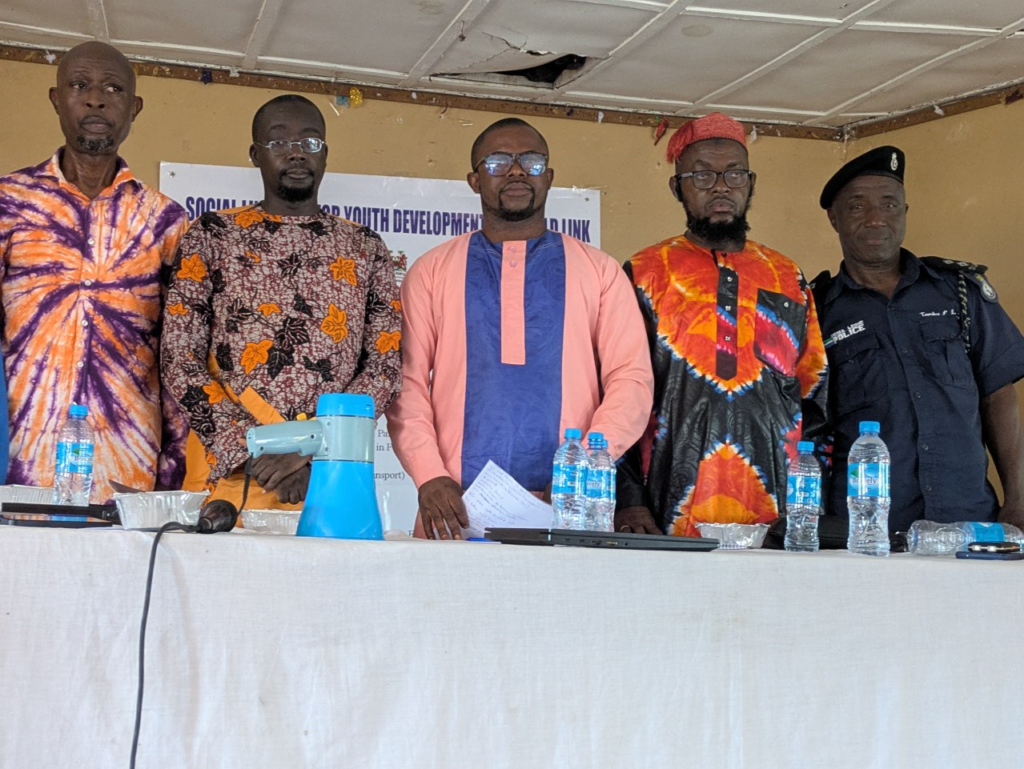
Members of the high table at the stakeholders engagement in the Lumely Community Center, Grass Field, Lumley on Monday, September 25, 2025. Image, Stephen ‘Roman’ Lahai, ManoReporters.
The launch of the final report coincided with the launch of a project designed to raise awareness on Kush and support action among the government and its partners against drugs and substance abuse.
The Grass Field event brought together community and religious leaders as well as law enforcement, with the aim of fostering a collaborative framework that empowers individuals to reintegrate into society with dignity, purpose and sustained support, said Habib T. Kamara, Executive Director of SLYDCL.
SLYDCL works with people who inject drugs and promote harm reduction. Kamara disclosed that Grass Field was selected as host of the activity because of the widespread practice of the drug abuse among its youth population.
“This community is one of the epicenters for Kush in Freetown. We are here to inform you that the chemicals in Kush are harmful to humans. We want you to go back to your communities and share this information,” he said in a statement marking the opening of the programme.
“Netazine is a very bad chemical. It is highly potent. This is the reason we see our brothers and sisters in such condition,” he added.
Other speakers at the event included community leader Santigie Kanu, whose community hosts a large number of drug users, and who has witnessed deaths and destruction of young lives as a result of drugs and substance abuse.
“I am a victim, myself, because my own child and the children of my brother and sister are all addicts,” said Kanu.
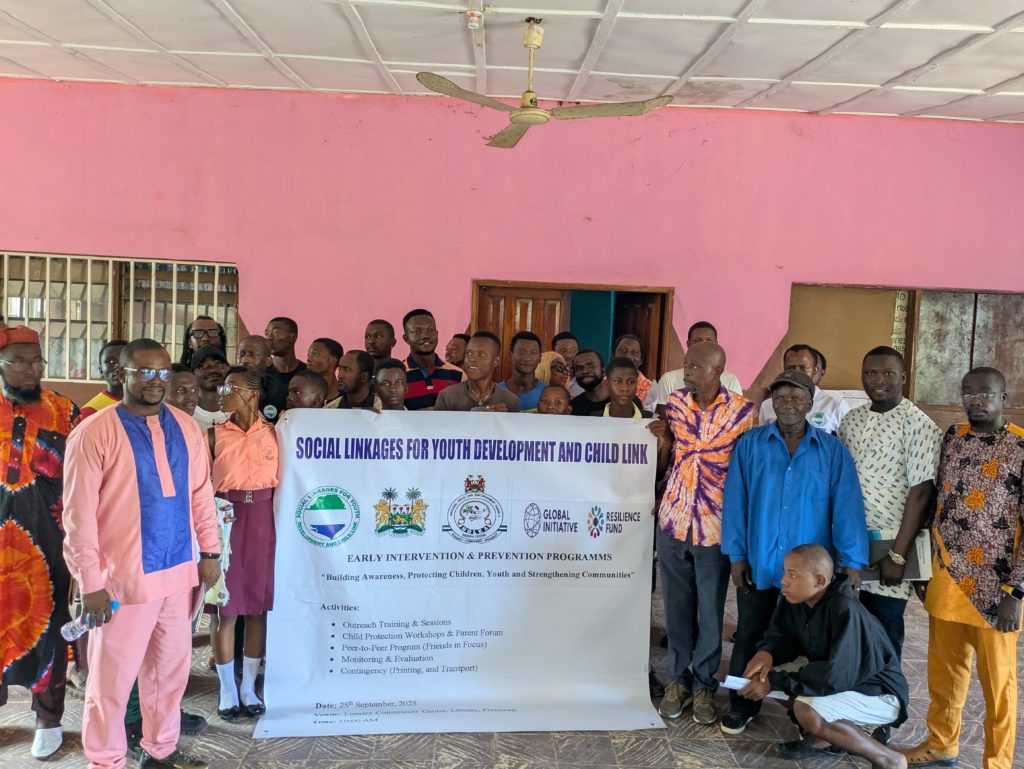
Also on the panel were representatives from law enforcement, the Ministry of Youths and religious leaders from both the Christian and Islamic faiths. The speakers appealed for collective action in the fight against drugs and substance abuse.
Also among the participants were former addicts who share their experience dealing with drug.

